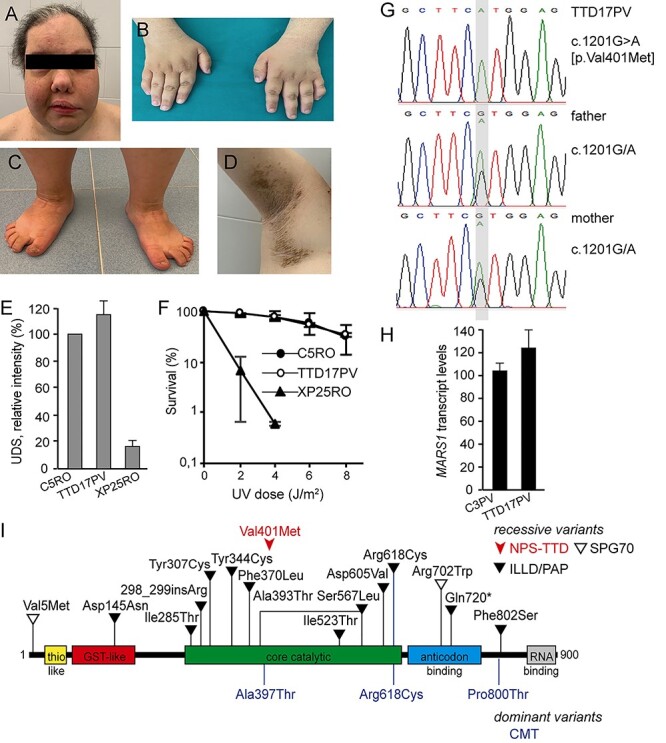Figure 2 .

MARS1-defective NPS-TTD case. (A–D) Clinical features of TTD17PV. Facial asymmetry (A); brachydactyly of the hands and feet (B, C); follicular keratosis and ichthyosis on patient underarm (D). (E) DNA repair capacity in control (C5RO), TTD17PV and NER-deficient xeroderma pigmentosum group A (XP-A; XP25RO) primary fibroblasts. DNA repair capacity was measured as UV-induced DNA repair synthesis (UDS) using EdU incorporation after UV irradiation and visualization by fluorescence-conjugated azide (Click-iT assay). Mean fluorescence intensities of at least 50 nuclei were expressed as percentage of those of control cells analyzed in parallel. Bars indicate the SEM of three independent experiments. (F) Clonogenic UV-survival assay to measure UV sensitivity in C5RO (closed circles), TTD17PV (open circles) and XP25RO (closed triangles) primary fibroblasts. One day after seeding, fibroblasts were irradiated with different doses of UV and were cultured for 2 weeks. Survival was plotted as the percentage of colonies obtained after treatment compared with the mock-treated fibroblasts (set at 100%). Bars indicate SD of three independent experiments. (G) Sanger sequencing traces of MARS1 genomic DNA in TTD17PV and her parents. TTD17PV is homozygous for c.1201G > A. (H) Cellular levels of MARS1 transcripts assessed by RT-qPCR. Total MARS1 transcript levels were first normalized to the levels of GAPDH mRNA and then expressed as percentages of the corresponding value in the normal C3PV cells. The reported values are the means of two independent experiments, each done in triplicate. Bars indicate SD. (I) Schematic representation of the domain structure of the MetRS protein and location of the identified variants. Recessive and dominant variants are shown over and under the protein scheme, respectively.
